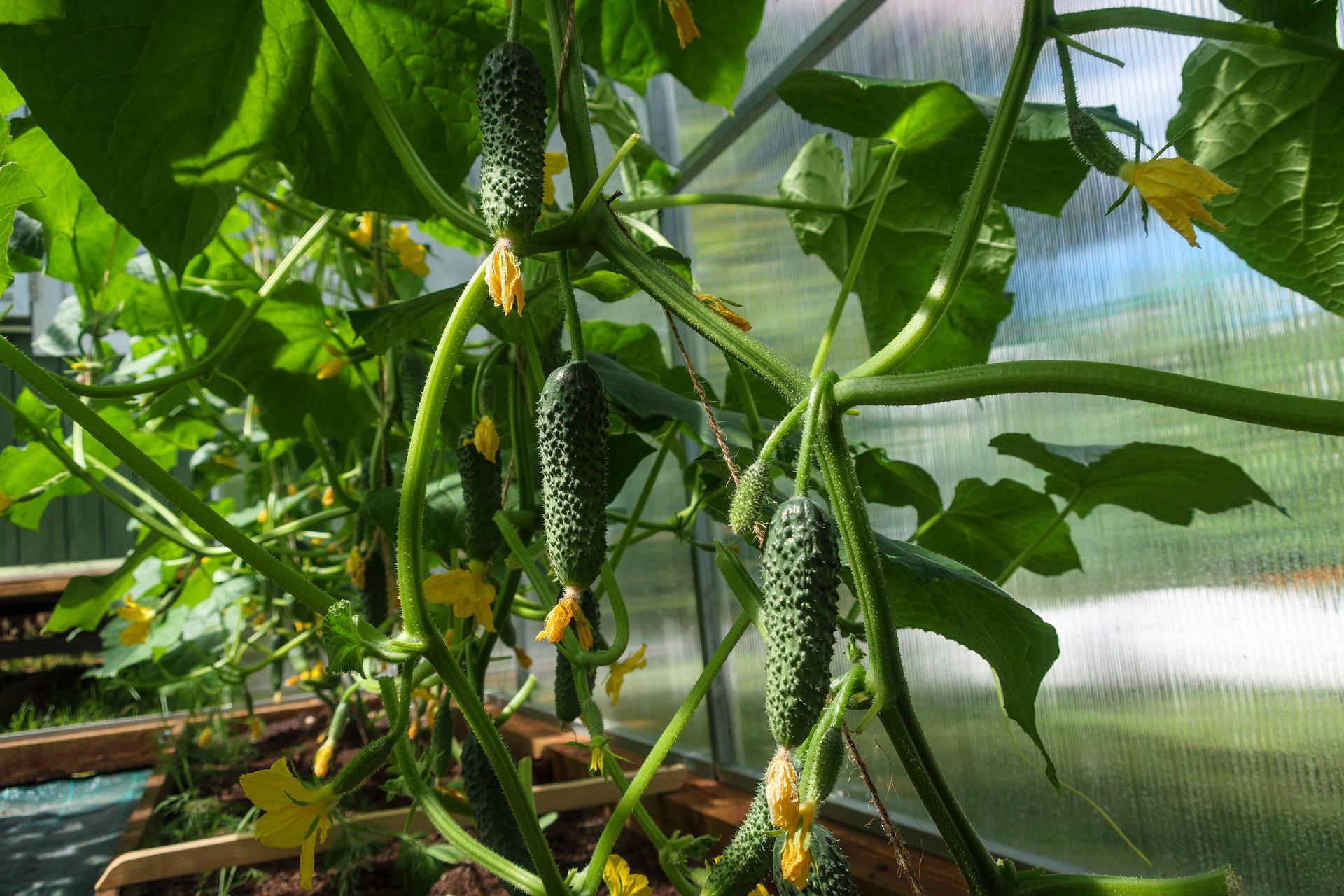Cucumber cultivation in protected environments does not differ much from open-field cultivation. In protected spaces, cultivation typically involves using transplants, applying plastic mesh for support, and using black polyethylene mulch under which drip irrigation pipes are placed. The advantage over open-field cultivation is the ability to plant earlier, extending the fruiting period, increasing yield, and allowing off-season harvesting, which justifies the economic feasibility of protected cultivation.
Protected environments include greenhouses and glasshouses. The characteristic of these environments is that they provide favorable microclimatic conditions for cucumber cultivation and maintain these conditions consistently throughout the growing period, regardless of external weather conditions. Maintaining constant microclimatic conditions can be achieved by heating (if a heating system is installed) or simply by closing all openings in the protected space, depending on the external temperature. During hot days, ventilation and airflow are also facilitated. Cucumber planting is done when the soil temperature reaches 18°C. The optimal air temperature for cucumber growth and development is between 21 – 24°C, and if temperatures exceed 27°C, ventilation is necessary. The nighttime temperature should be maintained around 19°C, and it is desirable to have a temperature difference of 4 – 5°C between day and night.
To monitor microclimatic conditions and maintain consistency, it is recommended to install climate stations in protected environments. These stations provide data on the current air temperature, relative humidity, light intensity, and CO2 concentration.
Factors influencing the choice of protected environment:
- Planned cultivation area size
- Plant species to be produced (affects the height of the greenhouse)
- Investment capabilities
- Type of substrate
- Duration of the growing season, with or without heating
- Planned future expansion or modification of the facility
Types of protected environments:
Type A: Low Tunnel – A commonly self-constructed structure without heating, used for seedling production and early-season cultivation. It has a simple design and lacks additional equipment. Cucumber cultivation is not possible in this type.
Type B: High Tunnel, Greenhouse – Often used as a simple solution due to lower costs for small-scale production, typically for early-season cultivation without heating. Ventilation is usually passive, achieved by opening doors and side panels. Cucumber cultivation is possible.
Type C: Typical Single-Span Greenhouse – This type has a curved roof, usually covered with polyethylene film. Sometimes polycarbonate panels are used for vertical walls. It can also have a Gothic-style roof with an arched profile and a peak in the center, suitable for snowy areas as snow slides off easily. Ventilation is provided through openings in the vertical walls, and fans are often used. It is designed for year-round cultivation and is suitable for cucumbers.
Type D: Traditional Glasshouse – This type uses glass or other rigid covering materials, but film can also be used. It is suitable for continuous year-round production. Ventilation can be natural, artificial (fans), or combined. It is suitable for installing all necessary systems.
Type E: Multi-Span Greenhouse – Similar to Type C but combines multiple single-span units into one structure, used for larger areas.
Type F: Multi-Span Glasshouse – This type combines multiple glasshouses (or greenhouses) of Type D. The units can form a single structure or be separated by a wall made from the covering material. If separated, different equipment and production schedules can be applied in each section. For example, one part can have year-round production with heating, while another part can focus on early-season production. This setup requires specific control for each section. Roofs can have central ridges with symmetrical sloping sides or single slopes per span.
Type G: Venlo Greenhouse – Named after the Dutch city of Venlo, this type can have two central ridges per span. Roof panels can pivot around a central axis, improving natural ventilation significantly.
Single-span greenhouses are intended for smaller areas, up to 400 m² (8 x 50 m), rarely up to 500 m². Larger sizes would encounter issues with the frame structure, covering, ventilation, irrigation, etc. For larger areas, multi-span greenhouses are used, reducing losses, saving space, construction, and covering costs, and providing a more reliable and cost-effective control system.













































